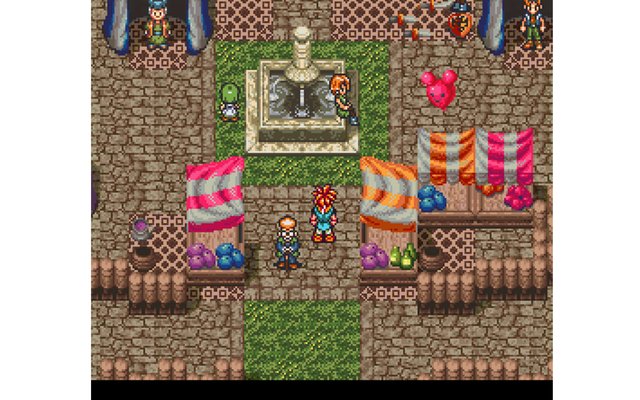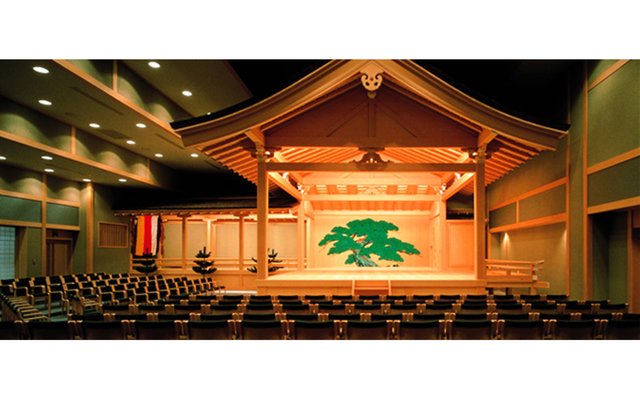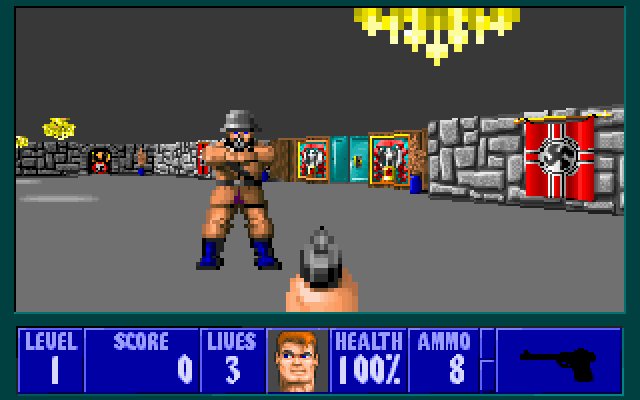Hi! I’m Kazuki Takakura, illustrator and hobby pixel artist.
Yes, hobby, because I don’t draw pixel art as a main part of my game-related work. Originally, I was drawing ordinary illustrations (high resolution illustrations, with whether content was ordinary or not aside), but since I love games, the resolution steadily dropped until I found myself drawing pixel art.
Which is why in this article, I am going to write about “game compositions” focusing on pixel art from a viewpoint slightly different than that of graphic and pixel artists in the game industry.
The history of game composition from the point of pixel art
Many people write different things about game history, but surprisingly few of them talk only about the pixel art or screens seen in games, so I will focus on that.
I was born in 1987, so I came to conscience just about during the transition period from FC to SFC, the latter mostly being 256 colors, 256x224 pixel art.
Mega Man X was the first game I played in my first year of primary school. This is the sequel series to the famous action game Mega Man, and instead of pursuing the Astro Boy-like world of its predecessor, it was made with hardcore sci-fi settings reminiscent of Blade Runner or The Matrix. Anyway, the characters and the design were pretty cool, so I fell for it right away.
Games from the golden age of pixel art have accumulated many forms of composition since the NES period that are passed down to smartphone games or even PS4 and Wii U games nowadays.
① RPG (bird’s-eye)
It seems the earliest game compositions came with the problem of how to adjust the layout to Gunpei Yokoi’s discovery (some say it’s a great discovery!), the D-pad.
Presently, we have horizontal, vertical, and depth in our world, but the D-pad only has the first two, right? And the TV screen is flat, too, so there’s only horizontal and vertical! This is similar to manga and anime, in short, planar/2D expression. Most of the early RPGs, such as the Dragon Quest series, use a composition where the protagonist is in the middle of the screen and you look down from the sky...
What’s weird about it is that although the player is supposed to become the main character, you have to look down at yourself and play the game. “I have never seen such a spectacle in reality,” you would think. It’s not very realistic, and unless you have an out-of-body experience (which I’ve never had), it’s pretty much impossible. RPGs originate from board games, so this composition might have been born from combining the two.

When you look at old Japanese paintings, you might find that the Japanese looked at things differently as opposed to the perspectives used in the West. (Toshiyuki Inoko from TeamLab calls it “super-subjective space.”)
Even on landscapes, things closer are drawn on the bottom, while depth is expressed in the upper part. The planar composition in games was probably highly compatible with that characteristic space arrangement ability of the Japanese, as RPGs have an especially Eastern composition, a subjective but at the same time esoteric composition where you play as if you were watching over yourself with the eyes of a god.

It’s mysterious how we can empathize so much with the protagonist despite such a composition.
If you take a close look, you can even see the villagers and retainers from the castle leading their lives. Another way to look at it is that it’s a composition that smartly integrates the story that advances as you interact with the people around you, which can be both enemies and friends you have to save. This kind of birds-eye view is also often used in party games where you have keep the movements of other players in check.
Even though we have 3D graphics today, some of them, such as Yo-Kai Watch, are made in a close composition, and people who have had the least bit of contact with games can instinctively feel, “Ah, so you have to work together, like in an RPG,” when seeing this composition.

② Side-scroller action (Noh stage and picture scrolls)
There is an Eastern way of expression that compresses dimensions. The idea is that trying to express everything is troublesome, so let’s just shave one off; it doesn’t matter if it’s realistic or not.
This way of thinking has also influenced both Eastern and Western classical theater: While Western theaters have a large depth and are arranged to look 3D, Japanese Noh and the like use a shallow, flat stage with one flat painting as the background and narrow, sidelong roads. It feels as they were made with, “We know where the viewers are looking from, so there’s no need for depth” in mind. This variant features a similar composition.

The player, who saw the world with a god’s eyeview in an RPG, is now watching the protagonist from the seats of a theater and immerses him or herself. You could say that this composition allows you to focus on the actions of the one main character, as opposed to the bird’s-eye view where you also had to mind the actions of the villagers around you. “Come on, protagonist! You can do it!”, you get the idea.
This composition is also somewhat reminiscent of picture scrolls such as Chouju-jinbutsu-giga, which is said to be the model for manga. There is a vast field spreading and spreading to the sides, and as you go on, the story gradually changes. The flow of time is easy to grasp. As games started shifting to 3D from around Crash Bandicoot and Resident Evil, they became nearly extinct from consoles, but you can still often encounter games of this type in smartphone applications.

③ Pokémon (close and far)
I’ve only seen this in old Pokémon games, so younger people might not know, but having your own Pokémon in front of you and the enemies in the back is actually the protagonist’s point of view. It uses the same way of expression where down is close and up is far.
What’s even more interesting is that the pixels in the front are very rough. It is thought that in the early days of Pokémon, programmers were faced with the problem of how to express depth with the few pixels of a Game Boy, and that’s when they arrived at the revolutionary conclusion, “That’s it, let’s make the pixels in the front huge!” This kind of aesthetic can probably only be exercised in pixel art.

④ Composition of overseas games (FPS)
In my impression, many games overseas are from a first person viewpoint. I’m talking about the so-called FPS (first person shooter) games, of course. In this genre, you walk through the game with a gun in your hand and see things through your own line of vision. (I’m very bad with these kinds of games. Even though they’re supposed to have a more realistic composition, they somehow feels less real. And they make me dizzy.)
These games are thought to be the most popular in America. Marking the early period of such games were probably Wolfenstein 3D and it’s famous sequel, Doom. Even though it’s only pixel art, they worked hard to express the subjective view and depth.
Lately, such FPS games have been becoming more popular in Japan, but most of them were probably made overseas.

One distinct characteristic of overseas games is that there is a vast field you can explore. In exchange, there aren’t as many instances when you bump into an invisible wall or can’t go to a place that’s seemingly accessible as in Japanese games.
I often think this characteristic of Japanese games where you can see but cannot enter might be influenced by an idea similar to Japanese stroll gardens with a pond in the center, but I will write about that some other time. I want to keep on analyzing game screens in the future, too.
Everyone, have a nice gaming life!
Source: KAI-YOU
Source article written by Kazuki Takakura

 Shopping Guide
Shopping Guide











